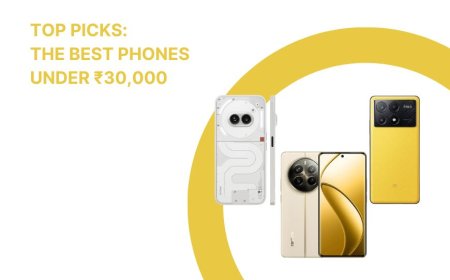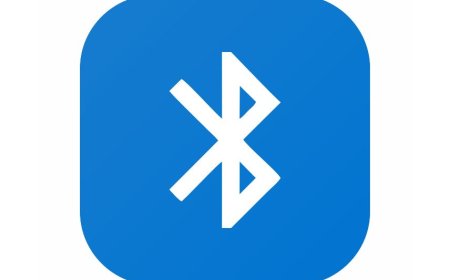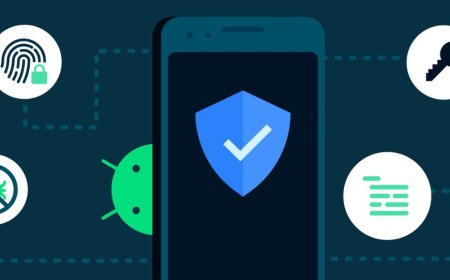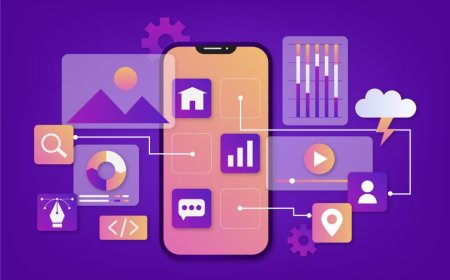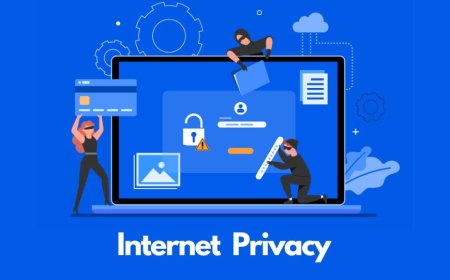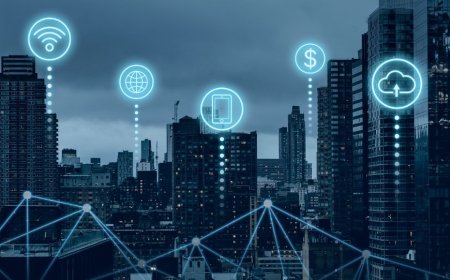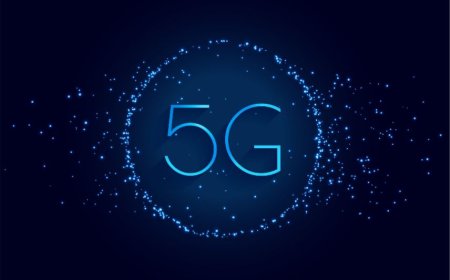5G and Mobile Phones: Revolutionizing Connectivity
Tectoks: Embrace the future of connectivity with 5G and mobile phones. Revolutionize your communication and stay connected like never before.
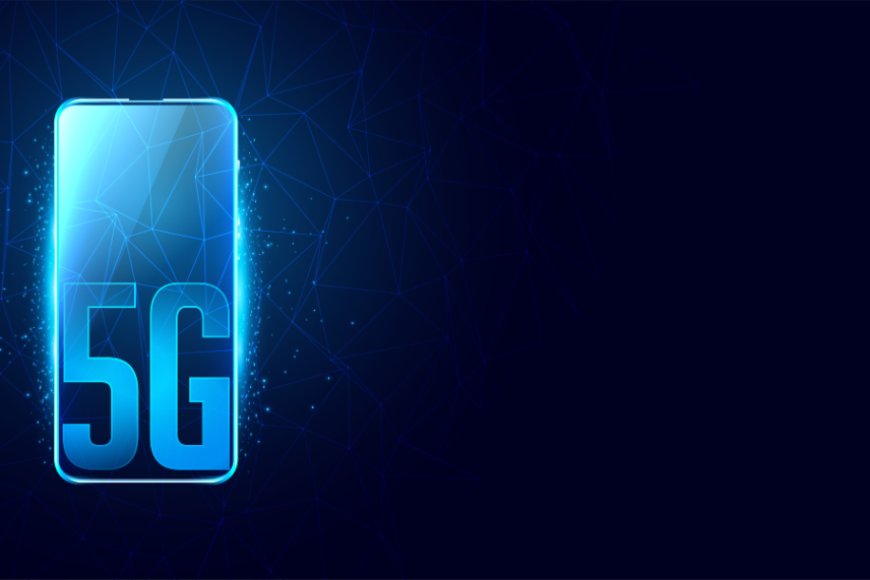
Table of contents:
-
Introduction
-
Mobile Network Evolution
-
5G Network Deployment
-
5G and Mobile Broadband
-
5G and Mobile App Development
-
Conclusion
1. Introduction
Imagine a world where you can download a full-length movie in seconds, stream high-definition video games without lag, and access real-time data from billions of connected devices. This is not science fiction, but the reality of 5G technology.
5G is the fifth generation of wireless technology, following on from previous generations (2G, 3G, and 4G). 5G is set to offer much faster connection speeds than previous networks, as well as being more reliable, with lower response times and greater capacity. 5G operates at higher radio frequencies that are less cluttered, allowing it to carry more information at a much faster rate. 5G also uses multiple input and output antennae to boost signals and capacity and smaller transmitters to overcome physical barriers. 5G technology can also ‘slice’ a physical network into multiple virtual networks, enabling operators to deliver the right slice of the network depending on how it is used.
5G technology is poised to transform multiple industrial and consumer applications, opening up new capabilities and opportunities. Some of the industries and sectors that are expected to benefit from 5G include: Manufacturing: 5G can enable smart factories where machines, sensors, and robots can communicate and coordinate in real-time, improving efficiency, productivity, and quality. Healthcare: 5G can enable remote diagnosis, surgery, and monitoring, as well as wearable devices and implants that can collect and transmit health data, improving access, accuracy, and outcomes. Transportation: 5G can enable autonomous vehicles, smart traffic management, and connected infrastructure, improving safety, mobility, and sustainability. Entertainment: 5G can enable immersive experiences, such as virtual reality, augmented reality, and holograms, as well as interactive and personalized content, enhancing creativity, engagement, and enjoyment.
The purpose of this blog post is to explore the potential impact of 5G technology on various aspects of our lives, from work to leisure, from health to education, and from communication to entertainment. In this blog post, we will discuss the benefits and challenges of 5G technology, the current status and prospects of 5G deployment, and the best practices and tips for using 5G technology.
2. Mobile Network Evolution:
Mobile networks have evolved from the first generation (1G) in the late 1970s to the fifth generation (5G) in the 2020s, offering faster speeds, lower latency, higher capacity, better coverage, and enhanced efficiency. Each generation introduces new technologies and standards to improve the performance and functionality of mobile communications. Here is a summary of the main features of each generation:
|
Generation |
Launch year |
Technology |
Speed |
Latency |
Features |
|
1G |
1979 |
Analog |
2.4 kbps |
N/A |
Voice calls |
|
2G |
1991 |
Digital |
64 kbps |
N/A |
SMS, MMS, |
|
3G |
2001 |
CDMA |
2 Mbps |
100 ms |
Internet, video, and gaming |
|
4G |
2009 |
LTE |
100 Mbps |
50 ms |
Broadband, VoIP, and cloud |
|
5G |
2020 |
NR |
20 Gbps |
1 ms |
VR, AR, IoT, slicing |
Main features and advantages of 5G: 5G is the latest and most advanced generation of mobile networks, offering several benefits over 4G and other technologies.
Some of the main features and advantages of 5G are:
-
-
Faster data speeds: 5G can deliver data up to 100 times faster than 4G, enabling users to download and upload large files, stream high-quality videos, and enjoy immersive experiences in seconds.
-
Lower latency: 5G can reduce the delay between sending and receiving data to less than 10 milliseconds and, in some cases, to 1 millisecond, enabling real-time communication, interaction, and feedback.
-
Higher capacity: 5G can support up to one million devices per square kilometer, compared to 4G’s 4,000 devices, enabling more users and things to connect simultaneously without congestion or interference.
-
Better coverage: 5G can use a new digital technology that improves coverage, speed, and capacity, especially in dense urban areas and remote rural areas, by using smaller transmitters, multiple antennae, and dynamic spectrum sharing.
-
Enhanced efficiency: 5G can use less energy and spectrum resources than 4G, reducing the environmental impact and operational cost of mobile networks and extending the battery life of devices.
-
- Challenges and opportunities of 5G adoption and deployment on 5G-enabled smartphones: 5G is not yet widely available and accessible to all smartphone users, as it requires significant investment and innovation in infrastructure, technology, ecosystems, and regulation.
-
Some of the challenges and opportunities of 5G adoption and deployment on 5G-enabled smartphones are:
-
-
Infrastructure: 5G requires a massive investment in infrastructure, such as base stations, fiber optic cables, and spectrum licenses, to provide the necessary coverage and capacity for 5G services. This poses a financial and technical challenge for operators, regulators, and governments, but also an opportunity for innovation and collaboration.
-
Technology: 5G relies on new and complex technologies, such as millimeter waves, massive MIMO, and network slicing, that pose technical and operational challenges for network design, optimization, and management. These technologies also require new standards, protocols, and architectures to ensure interoperability, security, and performance.
-
Ecosystem: 5G enables new and diverse applications and use cases across various industries and sectors, such as healthcare, transportation, and entertainment, that require coordination and integration among different stakeholders, such as operators, service providers, device manufacturers, and end-users. This creates a challenge for developing and maintaining a coherent and compatible ecosystem, but also an opportunity for creating and capturing value.
-
Regulation: 5G raises new and complex issues for regulation and policy, such as spectrum management, data privacy, cybersecurity, and competition, that require careful and timely consideration and action by regulators and policymakers. This creates a challenge for balancing the interests and needs of different parties, but also an opportunity for fostering and facilitating the development and adoption of 5G.
-
-
Characteristics and requirements of 5G-enabled smartphones: 5G-enabled smartphones are devices that can connect to 5G networks and take advantage of their features and benefits. However, not all 5G-enabled smartphones are the same, as they may differ in their specifications, capabilities, and compatibility.
-
Some of the characteristics and requirements of 5G-enabled smartphones are:
-
5G supporting chipset: This is the main component that determines the performance and functionality of a 5G-enabled smartphone. It consists of a processor, a modem, and other elements that enable the device to communicate with 5G networks. The chipset should support the 5G bands and frequencies that are available in the region and with the service provider of the user. Some examples of 5G-supporting chipsets are Qualcomm Snapdragon 8 Gen 3, MediaTek Dimensity 9000, Samsung Exynos 1380, and Apple A16 Bionic.
-
5G support: This is the feature that determines the compatibility and coverage of a 5G-enabled smartphone. It refers to the range of frequencies that the device can use to connect to 5G networks. The more bands a device supports, the better the network performance and reliability. However, not all bands are available or supported in all regions or by all service providers, so users should check if the 5G band supports their devices before buying or using them. Some examples of 5G bands are n1, n2, n3, n41, n77, n78, and n79.
-
Big battery: This is the feature that determines the endurance and usability of a 5G-enabled smartphone. It refers to the capacity and efficiency of the battery that powers the device. 5G can consume more battery power than 4G, especially when using high-speed or high-bandwidth applications. Therefore, users should look for devices that have big batteries, preferably above 5000 mAh, and fast charging technologies, such as Turbo Power, Flash Charging, or Turbo Charging. Additionally, users should look for devices that have smart features, such as auto-switching to 4G LTE when 5G is not needed, to save battery life.
-
Wider bandwidth: This is the feature that determines the speed and quality of data transmission on a 5G-enabled smartphone. It refers to the amount of data that can be sent or received per unit of time. The wider the bandwidth, the faster and smoother the data transmission. 5G can offer a wider bandwidth than 4G, especially when using millimeter wave frequencies, which can carry more information at a faster rate. However, millimeter wave frequencies have a shorter range and can be blocked by physical obstacles, such as buildings or trees. Therefore, users should look for devices that can use both sub-6 GHz and millimeter wave frequencies, depending on the availability and suitability of the network.
-
Comparison and contrast of some of the latest models and brands of 5G smartphones: There are many models and brands of 5G smartphones available on the market, each with its own features, specifications, and prices. Users should compare and contrast them based on their needs, preferences, and budget.
Here is a table that compares and contrasts some of the latest models and brands of 5G smartphones:
|
Model |
Brand |
Price |
Chipset |
Bands |
Battery |
Bandwidth |
|
iQOO 12 5G |
iQOO |
Rs. 52,999 |
Snapdragon 8 Gen 3 |
n1, n3, n5, n7, n8, n20, n28, n38, n40, n41, n77, n78, n79 |
5000 mAh |
Sub-6 GHz and mmWave |
|
Xiaomi Redmi 13C 5G |
Xiaomi |
Rs. 11,671 |
MediaTek Dimensity 6100 Plus |
n1, n3, n5, n7, n8, n20, n28, n38, n40, n41, n77, n78, n79 |
5000 mAh |
Sub-6 GHz |
|
Motorola Edge 40 Neo |
Motorola |
Rs. 22,999 |
MediaTek Dimensity 7030 |
n1, n3, n5, n7, n8, n20, n28, n38, n40, n41, n77, n78, n79 |
5000 mAh |
Sub-6 GHz |
|
iPhone 13 |
Apple |
Rs. 49,499 |
Apple A15 Bionic |
n1, n2, n3, n5, n7, n8, n12, n20, n25, n28, n30, n38, n40, n41, n48, n66, n71, n77, n78, n79, n260, n261 |
3240 mAh |
Sub-6 GHz and mmWave |
|
Vivo T2x 5G |
Vivo |
Rs. 11,999 |
Octa-core |
n1, n3, n5, n7, n8, n20, n28, n38, n40, n41, n77, |
3. 5G Network Deployment
Technical and logistical aspects of 5G network deployment: 5G network deployment involves the installation and operation of new radio access technologies, transport networks, and core networks that support 5G services and applications.
Some of the technical and logistical aspects of 5G network deployment are:
-
Spectrum allocation and management: 5G networks require a mix of spectrum bands across low, mid, and high frequencies to provide the optimal performance, coverage, and capacity for different use cases. Spectrum allocation and management are critical for ensuring the efficient and harmonized use of scarce and valuable radio frequency resources among different operators, technologies, and services.
-
Network architecture and design: 5G networks adopt a flexible and modular network architecture that enables the separation of control and user planes, the disaggregation and virtualization of network functions, and the slicing of network resources. Network architecture and design are important for optimizing network performance, functionality, and scalability for different scenarios and requirements.
-
Network deployment and optimization: 5G networks require the deployment and optimization of new network elements, such as base stations, antennas, fiber optic cables, and routers, as well as the integration and interoperability with existing network infrastructure, such as 4G, Wi-Fi, and satellite. Network deployment and optimization are essential for ensuring network quality, reliability, and security for different users and services.
-
Network operation and management: 5G networks require the operation and management of complex and dynamic network environments, such as multi-vendor, multi-domain, and multi-service networks, as well as the orchestration and automation of network functions and services. Network operation and management are crucial for enhancing network efficiency, agility, and intelligence for different situations and demands.
-
Current status and progress of 5G network deployment in different regions and countries: 5G network deployment varies across different regions and countries, depending on the availability of spectrum, infrastructure, technology, ecosystem, and regulation. According to the latest data from GSMA Intelligence, as of October 2021, there are 181 5G operators in 72 countries that have launched commercial 5G services, and there are 619 5G operators in 138 countries that are investing in 5G networks in the form of trials, deployments, or licenses.
-
Some of the regions and countries that have made significant progress in 5G network deployment are:
-
Asia Pacific: This region is leading the 5G network deployment, with 69 5G operators in 20 countries that have launched commercial 5G services and 216 5G operators in 37 countries that are investing in 5G networks. China, South Korea, Japan, and Australia are among the frontrunners in 5G network deployment, with large-scale rollouts, high penetration rates, and diverse use cases. India, Indonesia, Thailand, and Vietnam are among the emerging markets in 5G network deployment, with ongoing trials, spectrum auctions, and partnerships.
-
Europe: This region is advancing the 5G network deployment, with 54 5G operators in 29 countries that have launched commercial 5G services and 171 5G operators in 44 countries that are investing in 5G networks. Germany, France, Italy, Spain, and the UK are among the leaders in 5G network deployment, with extensive coverage, high adoption rates, and innovative applications. Poland, Romania, Greece, and Ireland are among the fast-movers in 5G network deployment, with recent launches, spectrum awards, and collaborations.
-
North America: This region is accelerating the 5G network deployment, with 9 5G operators in 2 countries that have launched commercial 5G services and 23 5G operators in 3 countries that are investing in 5G networks. The US and Canada are among the pioneers in 5G network deployment, with nationwide rollouts, massive investments, and cutting-edge use cases. Mexico is among the challengers in 5G network deployment, with planned launches, spectrum tenders, and alliances.
-
Economic and social impacts of 5G network deployment on various stakeholders and sectors: 5G network deployment is expected to create new value across industries and society by enabling faster, smarter, and more connected services and applications.
-
Some of the economic and social impacts of 5G network deployment on various stakeholders and sectors are:
-
Operators: 5G network deployment can help operators increase their revenue, reduce their costs, and improve their customer satisfaction by offering new and enhanced services, such as fixed wireless access, cloud gaming, and network slicing, as well as by leveraging new and efficient technologies, such as virtualization, automation, and artificial intelligence.
-
Consumers: 5G network deployment can help consumers enhance their experience, productivity, and well-being by accessing new and improved services, such as ultra-high-definition video, immersive entertainment, and telemedicine, as well as by benefiting from new and convenient features, such as low latency, high reliability, and massive connectivity.
-
Industries: 5G network deployment can help industries transform their processes, products, and business models by adopting new and innovative applications, such as smart manufacturing, autonomous driving, and smart grid, as well as by exploiting new and flexible capabilities, such as edge computing, the internet of things, and digital twins.
-
Society: 5G network deployment can help society address its challenges, opportunities, and goals by enabling new and impactful solutions, such as smart cities, e-learning, and e-government, as well as by supporting new and sustainable outcomes, such as economic growth, social inclusion, and environmental protection.
4. 5G and Mobile Broadband
-
Mobile broadband is a type of wireless internet access that allows you to connect to the internet using a mobile device, such as a smartphone, tablet, or laptop. Mobile broadband uses cellular networks, such as 3G, 4G, or 5G, to transmit data over radio waves.
-
5G is the fifth generation of mobile network technology, which offers faster speeds, lower latency, higher capacity, and more reliability than previous generations. 5G can support up to 10 gigabits per second (Gbps) of data transfer, 100 times faster than 4G.
-
Applications of mobile broadband include browsing the web, streaming video and music, gaming, video conferencing, social media, online education, telemedicine, and more. Mobile broadband can also enable new services and innovations, such as virtual reality, augmented reality, the Internet of Things, smart cities, and autonomous vehicles.
-
5G enhances the performance and functionality of mobile broadband by providing faster and more consistent connectivity, lower latency, and higher bandwidth. This means users can enjoy smoother and more immersive experiences, such as 4K video, cloud gaming, and XR applications. 5G also enables more devices to connect to the network simultaneously, which can support the growth of IoT and smart solutions.
-
The implications and challenges of 5G and mobile broadband for data consumption and security include:
-
Increased data consumption: As 5G offers faster and more reliable access to high-quality content and services, users may consume more data than before, which can increase their data usage and costs. Operators may need to offer more flexible and affordable data plans to meet the demand.
-
Enhanced data security: 5G uses advanced encryption and authentication mechanisms to protect data from unauthorized access and interference. However, 5G introduces new risks and vulnerabilities, such as cyberattacks, privacy breaches, and data theft. Users and operators must be aware of the potential threats and adopt appropriate measures to safeguard their data.
5. 5G and Mobile App Development
-
The process of developing software programs that run on mobile devices, such as smartphones and tablets, is known as mobile app development. Mobile app development involves designing, coding, testing, debugging, deploying, and maintaining the app. Mobile app development can be done using different approaches, such as native, web, hybrid, or cross-platform.
-
5G is the fifth generation of mobile network technology, which offers faster speeds, lower latency, higher capacity, and more reliability than previous generations. 5G can support up to 10 gigabits per second (Gbps) of data transfer, 100 times faster than 4G.
-
5G enables and supports the innovation and improvement of mobile apps by providing faster and more consistent connectivity, lower latency, and higher bandwidth. This means users can enjoy smoother and more immersive experiences, such as 4K video, cloud gaming, and XR applications. 5G also enables more devices to connect to the network simultaneously, which can support the growth of IoT and smart solutions.
-
Trends and opportunities for 5G and mobile app development for different domains and purposes include:
-
Augmented and virtual reality: 5G can enhance the performance and quality of AR and VR apps, which can create more realistic and interactive experiences for users. AR and VR apps can be used for various purposes, such as entertainment, education, training, healthcare, tourism, and more.
-
Internet of Things: 5G can enable more IoT devices to communicate and exchange data in real-time, which can create more smart and connected solutions for various domains, such as home automation, industrial automation, smart cities, agriculture, and more.
-
Cloud computing: 5G can facilitate the access and use of cloud-based services and resources, which can reduce the storage and processing requirements of mobile apps. Cloud computing can also enable more scalability, flexibility, and security for mobile app development and deployment.
6. Conclusion
In this blog post, we have explored the concept and applications of mobile broadband, the features and benefits of 5G, and the implications and challenges of 5G and mobile broadband for data consumption and security. We have also discussed how 5G enables and supports the innovation and improvement of mobile apps, as well as the trends and opportunities of 5G and mobile app development for different domains and purposes.
Some recommendations or suggestions for further research or action are:
-
To learn more about the technical aspects and standards of 5G and mobile broadband, you can refer to the sources cited in this blog post or visit the websites of the International Telecommunication Union (ITU) and the 3GPP (3rd Generation Partnership Project).
-
To experience the benefits and potential of 5G and mobile broadband, you can check if your device and network provider support 5G and try out some of the latest and most popular mobile apps that leverage 5G, such as Netflix, Spotify, Fortnite, Pokemon Go, and more.
-
To contribute to the development and improvement of 5G and mobile broadband, you can share your feedback and suggestions with your network provider and app developers, or participate in online forums and communities related to 5G and mobile broadband.
We hope you have enjoyed reading this blog post and learned something new and useful. 5G and mobile broadband are transforming the way we access and use the internet, creating new possibilities and opportunities for users and developers alike. As 5G and mobile broadband become more widespread and accessible, we can expect to see more innovations and improvements in the mobile app industry and beyond.
What are some of the mobile apps that you are looking forward to using with 5G and mobile broadband? Let us know in the comments below!
What's Your Reaction?









